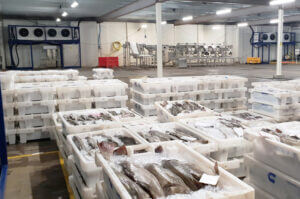Optimizing Chilled Water Flow in Industrial Process Systems for Enhanced Efficiency
Understanding Chiller Water Flow in Industrial Applications
In modern industrial environments, maintaining optimal temperatures is crucial for efficient operations, especially in facilities such as manufacturing plants, data centers, and chemical processing units. One of the most common systems implemented for temperature regulation is the chiller system, which relies on a consistent and effective water flow to operate efficiently. This article explores the significance of chiller water flow in factory settings, helping readers understand the fundamental principles and best practices associated with this vital process.
Chiller systems work by removing excess heat from a designated area and transferring it to the water circulating through the system. This process uses a refrigeration cycle, where refrigerant absorbs heat from the water, thus cooling it down before it is sent back into the facility for temperature regulation. The efficiency of this process is heavily influenced by the flow rate of water, making it a critical factor to monitor and manage.
Understanding Chiller Water Flow in Industrial Applications
One primary concern in managing chiller water flow is the balance between flow rate and energy consumption. Insufficient flow can lead to inadequate cooling, while excessive flow may waste energy and increase operational costs. Therefore, facilities often use sensors and monitoring systems to assess flow rates in real-time. These systems allow operators to make data-driven decisions to adjust flow rates dynamically, maximizing energy efficiency while meeting cooling demands.
chiller water flow factory

Another critical aspect of chiller water flow in factories is the prevention of thermal shock. Rapid changes in water temperature can lead to expansion and contraction in piping systems, potentially causing damage. To mitigate this risk, facilities should incorporate proper controls that gradually adjust flow rates, avoiding abrupt temperature changes that could compromise equipment integrity.
Furthermore, proper maintenance of the chiller system is essential for sustained performance. Regular inspections should be conducted to check for leaks, blockages, or wear in the system components. If not addressed, these issues can hinder water flow, reducing the overall efficiency of the chiller. Implementing a maintenance schedule that includes cleaning strainers, checking pump operation, and calibrating flow meters will help ensure that the system operates smoothly and effectively.
In addition, the quality of the water used in the chiller system plays a significant role in performance. Evaporation, chemical deposits, and biological growth can all affect the thermal conductivity of water and the overall efficiency of the cooling process. Therefore, water treatment measures, including filtration and chemical treatment, should be in place to maintain water quality, further supporting optimal flow characteristics.
In conclusion, understanding and managing chiller water flow is pivotal for factories seeking to maintain efficient operations and optimal temperatures. By ensuring the right flow rates, investing in monitoring technology, conducting regular maintenance, and maintaining water quality, facilities can enhance their chiller systems' performance, ultimately leading to energy savings and reduced operational risks. With the right approach, businesses can leverage the benefits of efficient chiller water flow systems to support their operational goals and enhance productivity.
















































































































